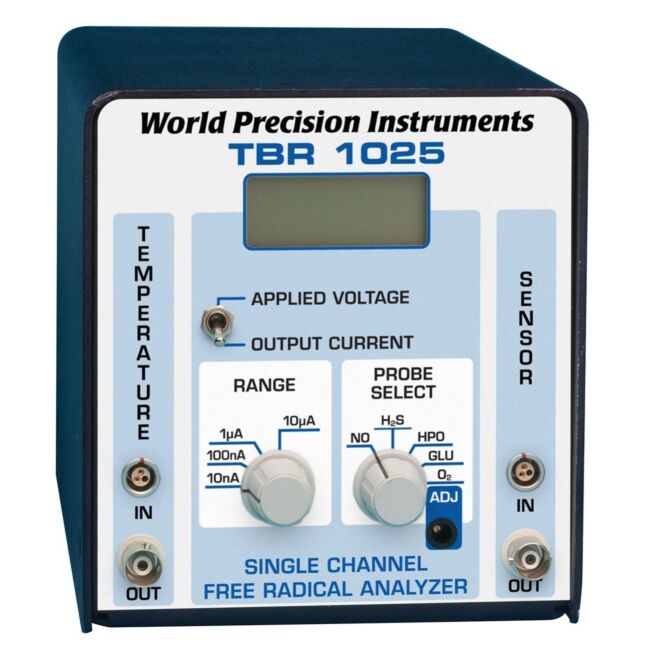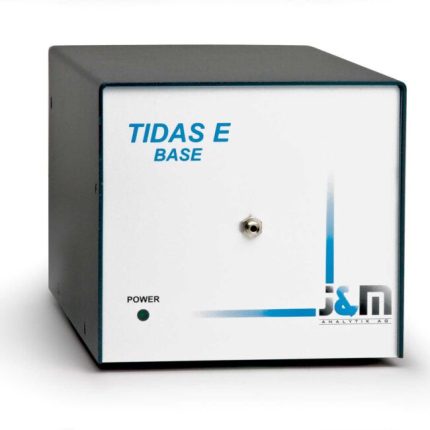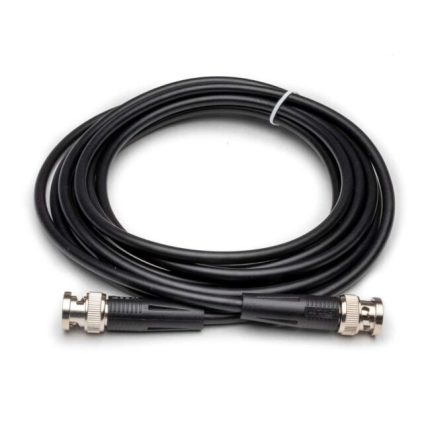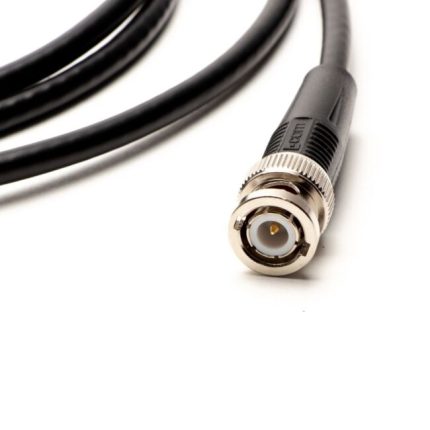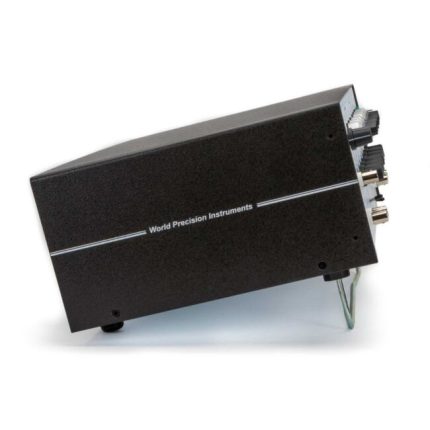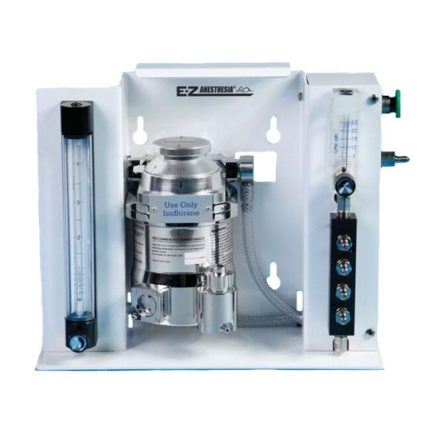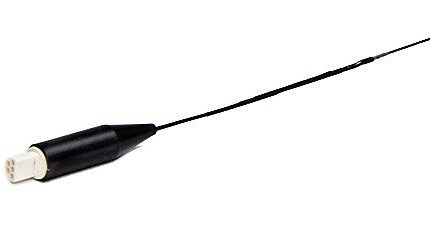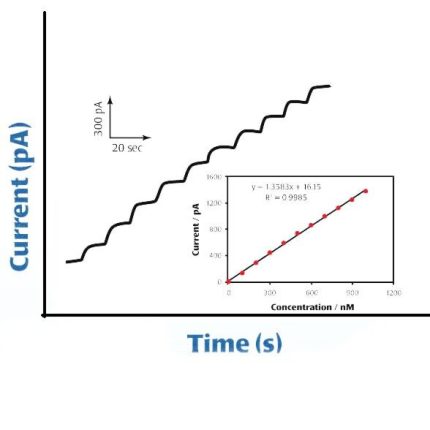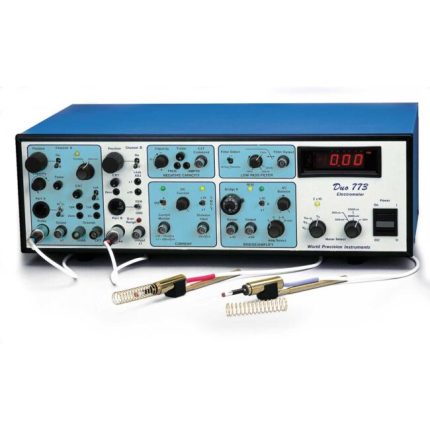| Power | 100 ~ 240 VAC, 50-60 Hz, | ||||||||||||||||||||
| Operating Temperature (ambient) | 0 – 50°C (32 – 122°F) | ||||||||||||||||||||
| Operating Humidity (ambient) | 15 – 70% RH non-condensing | ||||||||||||||||||||
| Warm up Time | < 5 min. | ||||||||||||||||||||
| Dimensions | 135 X 419 X 217 mm (5.25″ X 16.5″ X 8.16″) | ||||||||||||||||||||
| Weight | 1.35 kg (3 lb.) | ||||||||||||||||||||
| Display Functions | 18 mm (0.7″) LCD readout, 4.5 digit Polarization Voltage (mV) Current input (nA, µA) | ||||||||||||||||||||
| Controls | Power (on/off) Current Input Range Polarization Voltage |
||||||||||||||||||||
| Analog Output Range | ±10 V (continuous) | ||||||||||||||||||||
| Analog Output Impedance | 10 KΩ | ||||||||||||||||||||
| Channel to Channel Isolation | >10 GΩ | ||||||||||||||||||||
| Channel to Output Isolation | >10 GΩ | ||||||||||||||||||||
| Power Supply to AC Line Isolation | >100 MΩ | ||||||||||||||||||||
| Analog Output Drift | < 10 pA/hr. | ||||||||||||||||||||
| Temperature Input: Number of Channels | 1 | ||||||||||||||||||||
| Temperature Input: Sensing Element | Platinum RTD, 1000 Ω | ||||||||||||||||||||
| Temperature Input: Range | 0-100°C | ||||||||||||||||||||
| Temperature Input: Accuracy | ± 1°C | ||||||||||||||||||||
| Temperature Input: Resolution | 0.1°C | ||||||||||||||||||||
| Temperature Input: Analog Output | 31.25 mV/°C (continuous) | ||||||||||||||||||||
| Amperometric Input: Number of Amperometric Channels | 4 | ||||||||||||||||||||
| Amperometric Input: Signal Bandwidth | 0-3 Hz | ||||||||||||||||||||
| Amperometric Input: Polarization Voltage (selectable via rotary switch) Nitric Oxide | 865 mV | ||||||||||||||||||||
| Amperometric Input: Polarization Voltage (selectable via rotary switch) Hydrogen Sulfide | 150 mV | ||||||||||||||||||||
| Amperometric Input: Polarization Voltage (selectable via rotary switch) Hydrogen Peroxide | 450 mV | ||||||||||||||||||||
| Amperometric Input: Polarization Voltage (selectable via rotary switch) Glucose | 600 mV | ||||||||||||||||||||
| Amperometric Input: Polarization Voltage (selectable via rotary switch) Oxygen | 700 mV | ||||||||||||||||||||
| Amperometric Input: Polarization Voltage (selectable via rotary switch) ADJ (user adjustable) | ± 2500 mV | ||||||||||||||||||||
| Polarization Voltage Accuracy | ± 5 mV | ||||||||||||||||||||
| Polarization Voltage Display Resolution | ± 1mV | ||||||||||||||||||||
| Current measurement Performance: |
|
||||||||||||||||||||
| Notes: | *Instrument performance is measured as the (max-min) over 20 seconds period with open input. Typical values are given at 3 Hz and 0.3 Hz bandwidth. | ||||||||||||||||||||
| Typical sensor performance with TBR4100: ISO-NOPF100 noise | 0.2 nM NO (< 2pA **) | ||||||||||||||||||||
| Notes: | **Sensor noise is measured as the (max-min) over a 20 seconds period with the sensor immersed in 0.1 M CuCl2 solution. |
Product was successfully added to quote request.View Your Quote Cart

FOUR-CHANNEL FREE RADICAL ANALYZER
$9,831.00 – $11,317.00Price range: $9,831.00 through $11,317.00

ISO-COP-2 CARBON MONOXIDE SENSOR - 2MM
$1,354.00
ONE-CHANNEL FREE RADICAL ANALYZER
$4,914.00
Сatalog number:
TBR1025
Categories: Analyzers, Instruments/Platform, TBR1025 Analyzer
Description
Shipping & Delivery
Related products
Tidas-E Base Series Photo Diode Array Spectrometer
$15,431.00
WPI’s Tidas series is a high end fiber-optic spectrometer module designed for low noise applications. The Tidas series outperforms conventional bench-based spectrophotometers and CCD-based spectrometer modules, when it comes to high precision fiber optic sampling. It relies on a monolithic optical bench made by Zeiss, which is optimized for fiber optic applications. Most cuvette-based standard spectrometers lose more than 90% of light through expensive prism decoupling. The Tidas series is designed for fiber optic sampling cells. Using suitable light sources and sample cells, spectral detection in the wavelength range of 190 to 1100 nm can be performed at noise levels < 0.04 mAU peak to peak.
BNC to BNC Cable
$40.00 – $47.00Price range: $40.00 through $47.00
Our BNC-to-BNC Coaxial Cables come in a variety of lengths, from 6 inches to 10 feet, and work well with our electrophysiology equipment and meters. These cables have a metal, male BNC connector on both ends of the cable. BNC (Bayonet Neill-Concelmen) connectors have a bayonet-style locking mechanism that provides a secure connection. These coaxial cables have an impedance of 50 ohms (RG58U style). The cables have excellent shielding from electromagnetic interference and radio frequency interference, which is perfect for electrophysiology laboratories. The length of your cable can affect the signal quality, so choose the shortest cable that is long enough for your application. Learn More
Single Channel Pulse Generator
$3,602.00 – $4,147.00Price range: $3,602.00 through $4,147.00
The A310 pulse generator/stimulator combines the reproducibility and accuracy of digital electronics with the fine resolution and continuous adjustment possible with analog circuitry. All timing parameters are entered with high resolution, ten-turn potentiometers and six-position range switches. Timing is accurate to within 1% of the set value.
PLANTAR TEST/TAIL FLICK METER FOR RAT AND MOUSE
$5,830.00 – $13,542.00Price range: $5,830.00 through $13,542.00
This unit, which is designed for testing narcotics and strong non-narcotic drugs, offers both Plantar (Hargreaves Method) and Tail Flick testing with a single unit. Either testing system is also available individually. In plantar mode, the visible light/heat source is directed at the paw or other desired body part, and in tail flick mode it is directed at the subjects’ tails. Test up to 12 mice or 6 rats simultaneously. If desired, other animals like cats and rabbits may also be used. Tests are simple to setup. The focused, radiant heat/light source creates a 4 x 6 mm intense spot. Because the light is visible, you know when the test starts and ends. The equipment is silent (no whining or clicking sounds) to avoid triggering an automatic response in conditioned animals. You can set a humane cutoff timer that automatically shuts off the heat if no response is observed during the designated time frame.
Сatalog number:
EZ-7000
Classic Small Animal Anesthesia System
$6,611.00
Complete small animal anesthesia system and all the accessories
EZ Anesthesia is the system of choice for anesthetizing small animals, and it comes with a variety of choices. Animals to be anesthetized are placed in the acrylic induction chamber, and the system delivers a precisely blended mixture of oxygen and isoflurane. An activated charcoal air filter canister at the top of the chamber releases safe, filtered air back into the room. A water-heated cage warmer or warming plate (ATC2000) is used to retain the animal body temperature while in the induction chamber. After the initial anesthetizing, the animal may be moved to the heated surgical water bed and positioned properly in the snugly fitted nose cone. A highly sensitive valve regulated by the animal’s breathing works with the nose cone to ensure non-rebreathing efficiency. It allows safe anesthesia for up to several hours. The breathing device also includes an air filter that releases safe, filtered air back into the room.ISO-NOPF Flexible Nitric Oxide Sensor
Analyzers, Amplifiers, Instruments/Platform, Free Radical Analyzers, Biosensors, Nitric Oxide Sensors
$1,251.00 – $1,792.00Price range: $1,251.00 through $1,792.00
ISO-NOPF electrodes are available in 100 µm, 200 µm and 500 µm diameters. Utilizing the latest advances in nano-technology and material science, scientists at WPI’s Sensor Laboratory have created these completely flexible and virtually unbreakable NO sensors. The new sensors are based on a composite graphite NO-sensing element combined with a reference electrode. The surface of the sens
Duo 773 Electrometer
$0.00

